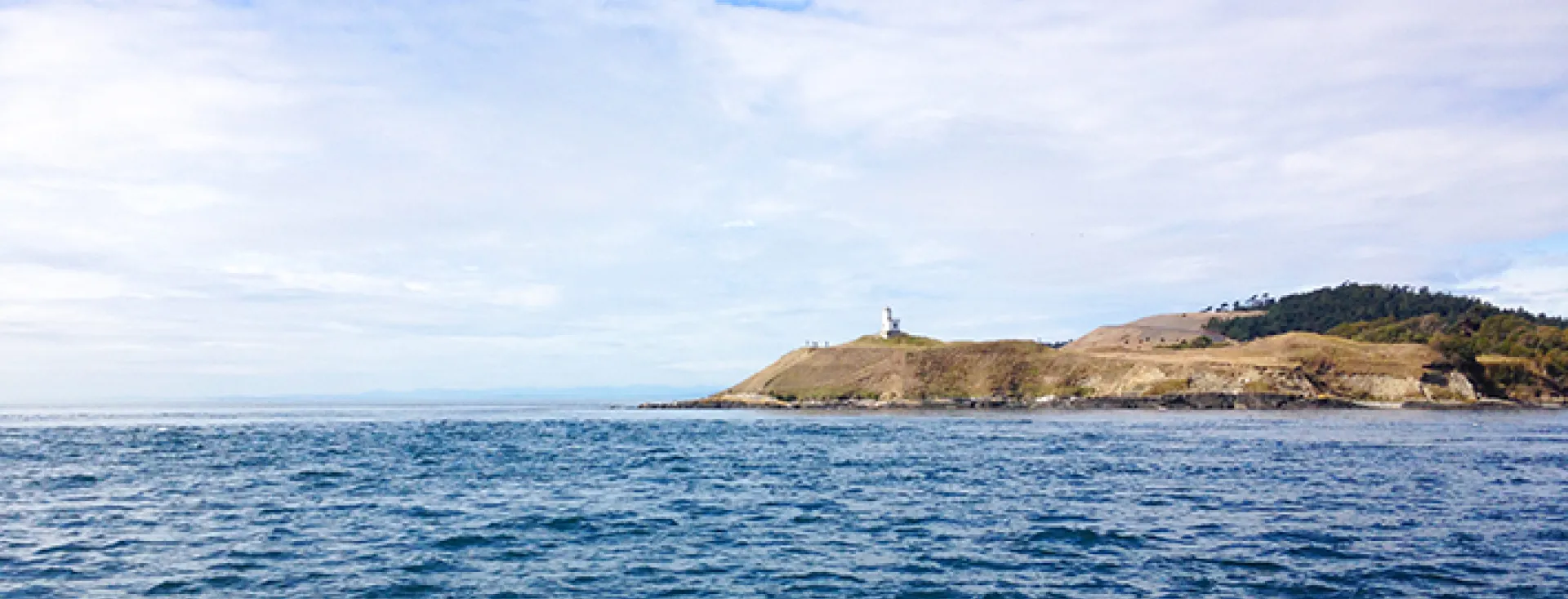
Traveling with Purpose on San Juan Island
Nowhere is ecological fragility quite as apparent as on an island in an ocean sharing its waters with wildlife, recreation and industry. I was painfully reminded about this in the beginning of this year, when word got out that “Granny”, the oldest Resident Orca, went missing and was presumed dead. I celebrated my own grandma’s 95th birthday that day and couldn’t help mourning the loss of their matriarch with the Orcas.
Whales are born. Whales die. In 2014, San Juan Island and its killer whales experienced a baby boom. Six calves were born, bringing the endangered population up to 84 black fish. There was talk of taking them off the endangered species list. Then last year we suffered several losses, and the frightful thought crossed my mind, that my granddaughter might not be able to see these majestic creatures in her backyard when she grows up. Our world is so precious. I decided to travel with purpose, to tread lightly and treat the native wildlife, land and people I visit with respect, let my money talk and leave every place I go, cleaner than I find it. Travelling like that is easy on San Juan Island.
If you are in your own boat, stay at least 200 yards away from marine mammals and stay out of the 100 yard “no-approach” zone. Keep a clear path in the direction the whales are swimming and avoid travel behind them.
Go Whale Watching with one of the experienced, local outfitters like the San Juan Safaris or the Western Prince, who give part of their proceeds to salmon restoration projects and always have knowledgeable, whale passionate naturalists on board. Consider going on an Orca Search kayak trip to avoid contributing to noise pollution. Or wander the shores of Lime Kiln State Park, the best place to see whales from land in the nation.
A great way to support and learn more about the endangered population of Orcas of the Salish Sea is to adopt one at the Whale Museum. Your symbolic adoption will demonstrate your commitment to help them recover by increasing awareness about their issues.
Pick up some garbage, it only takes a minute and might safe a webbed footie from injury
Let the Wildlife Be
It’s the wildlife on San Juan Island that keeps me coming back. The black foxes hunting along the dunes above South Beach, the river otters feeding in the shallow waters of Deadman’s Bay, the Bald Eagles and Hawks riding the thermals above Mt Grant. The wildlife surrounds you, but please, don’t surround the wildlife. You may find a baby seal on the beach at dusk, looking forlorn with its big black eyes. But don’t fret, it hasn’t been abandoned, it is in seal day-care. His parents are hunting and will be right back. Please keep your dog on a leash. When you are quiet, you’ll see and hear even more wildlife, like the song of a hundred Red-winged Blackbirds in the rose bushes at American Camp. If you do see an injured or orphaned animal, call the good people at the Wolf Hollow Wildlife Rehabilitation Center at 360-378-5000 and they will help.
Prickly Pear Cactus & Blue Camas
Tread Lightly
There are not only amazing animals to see on San Juan Island, there are also breathtaking vistas, long pebbly beaches, narrow trails along steep cliffs and up mountains. In American Camp on the south end of the island the National Park Service is re-establishing prairie grass on the endless rolling hills. At Lime Kiln State Park along south facing cliffs you’ll sometimes find the Prickly Pear Cactus, the only native cactus this far north. In Spring, the island is abloom with carpets of wildflowers, like the precious Fawn Lilies and gorgeous Blue Camas. Tread lightly, stay on trails, don’t litter and better yet, pick up any garbage there might be. It just takes a minute and you might save a claw- or webbed-footie from getting cut on broken glass.
An awesome way to help preserve pristine land for wildlife habitat is to get involved with the San Juan Preservation Trust, who recently acquired Mt Grant, San Juan Island’s newest wildlife preserve and highest, publicly-accessible mountain.
Island Studios feature arts & crafts from Island Artists
Think Global, Shop Local
San Juan Islanders are a hard-working, incredibly friendly, creative bunch. Many restaurants, shops and hotels, like the Earthbox Inn & Spa, are family-owned and operated. The island sports more working artists than anywhere else in the State. But art is not the only thing made here. There are farms producing veggies, fruit, flowers, meats, seafood and cheeses, often featured in the local restaurants. There is the Pelindaba Lavender Farm, a vineyard, a distillery, an oyster farm, an Alpaca Farm and someone who makes sea salt and honey.
When going out to eat, choose a restaurant that cooks with local ingredients, like the Duck Soup or the Back Door Kitchen. When buying your souvenirs, browse the many galleries for local arts, crafts and pottery, go to the Saturday Farmer’s Market or the Food Coop for island made treats and crafts.
Treat yourself to a purposeful trip to San Juan Island and be rewarded with an incredible sense of place, meaningful connection and deep wonder.
